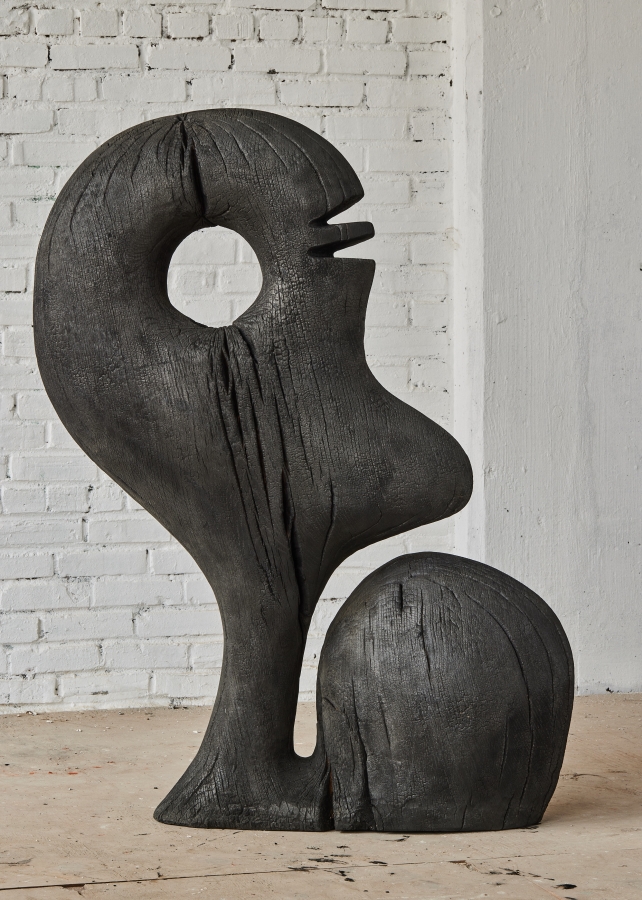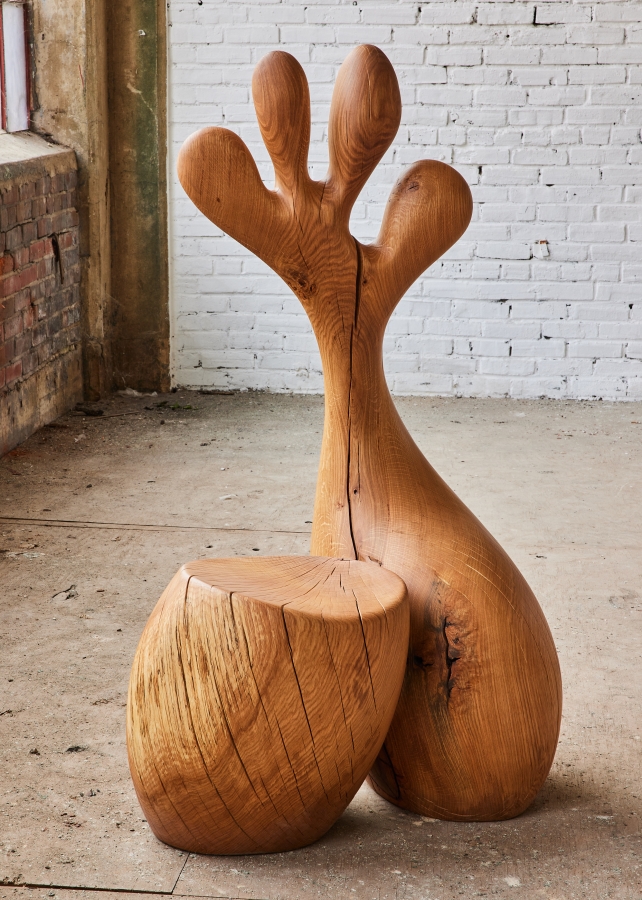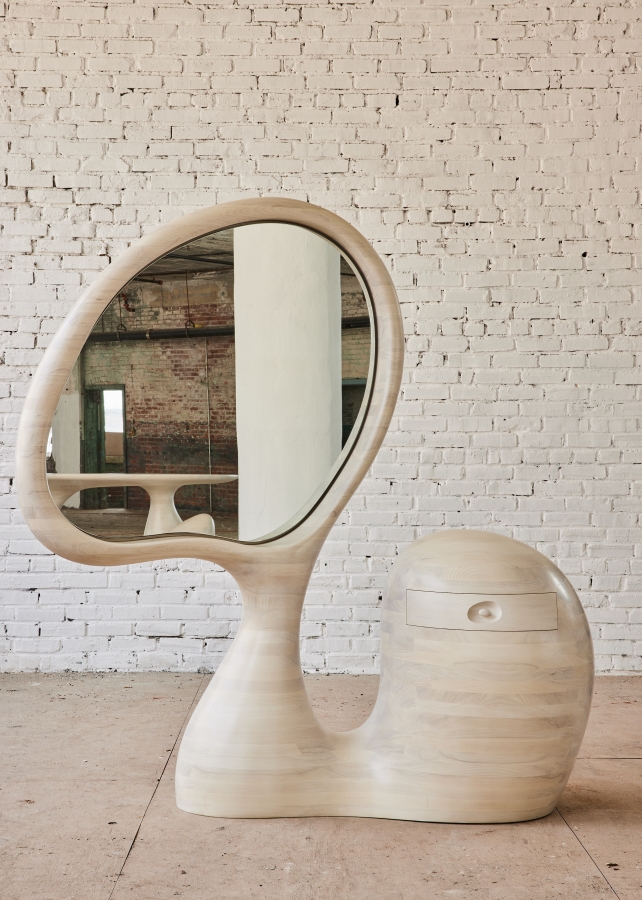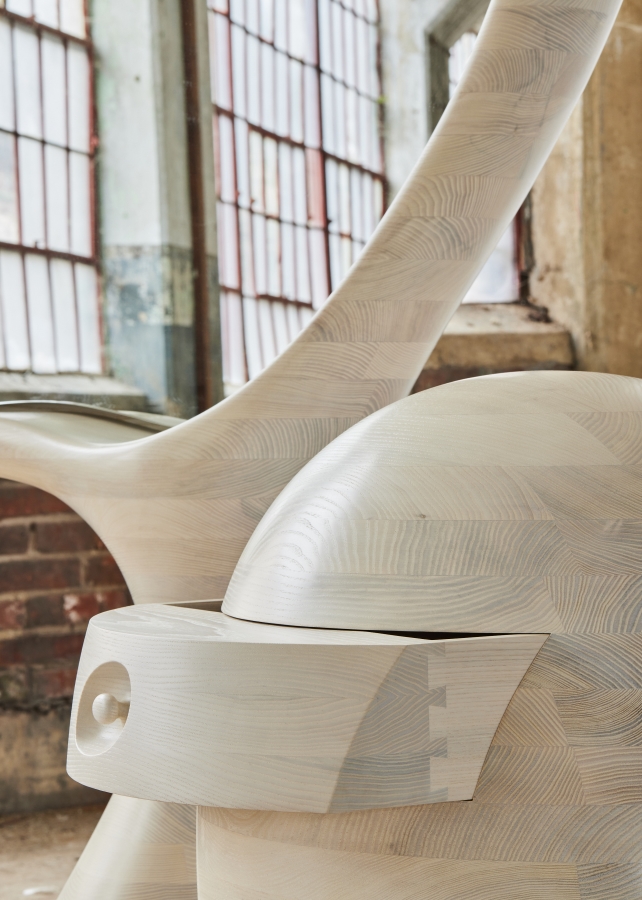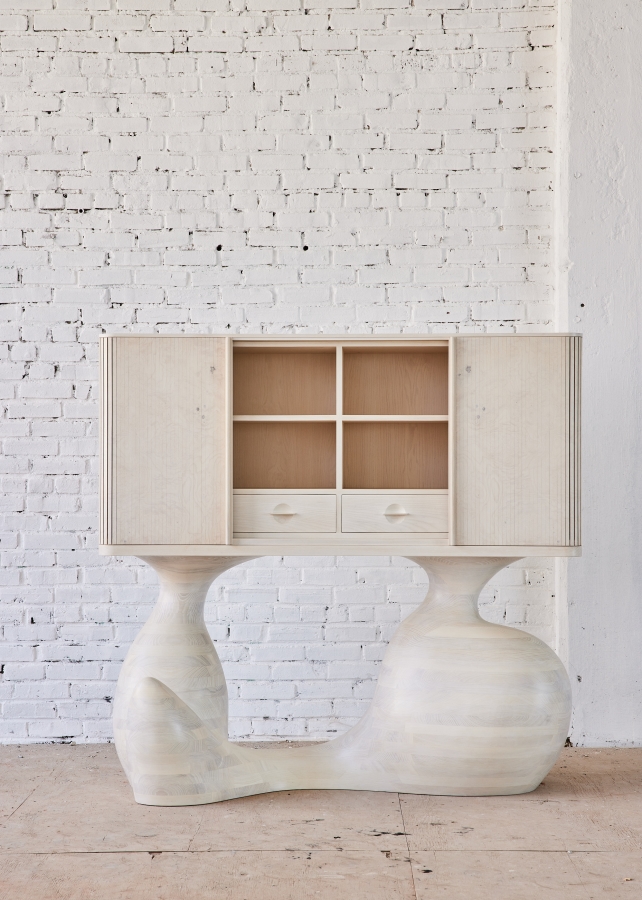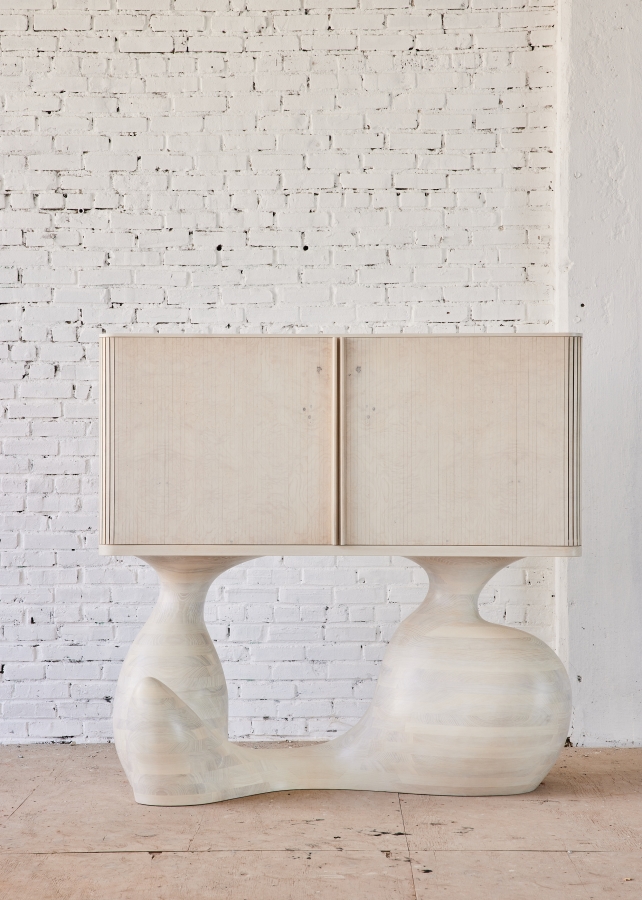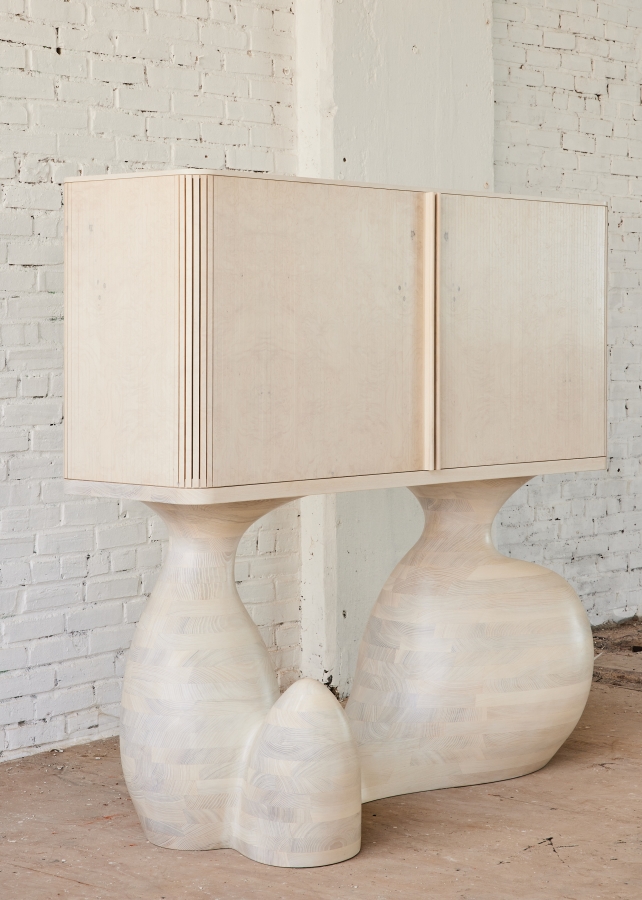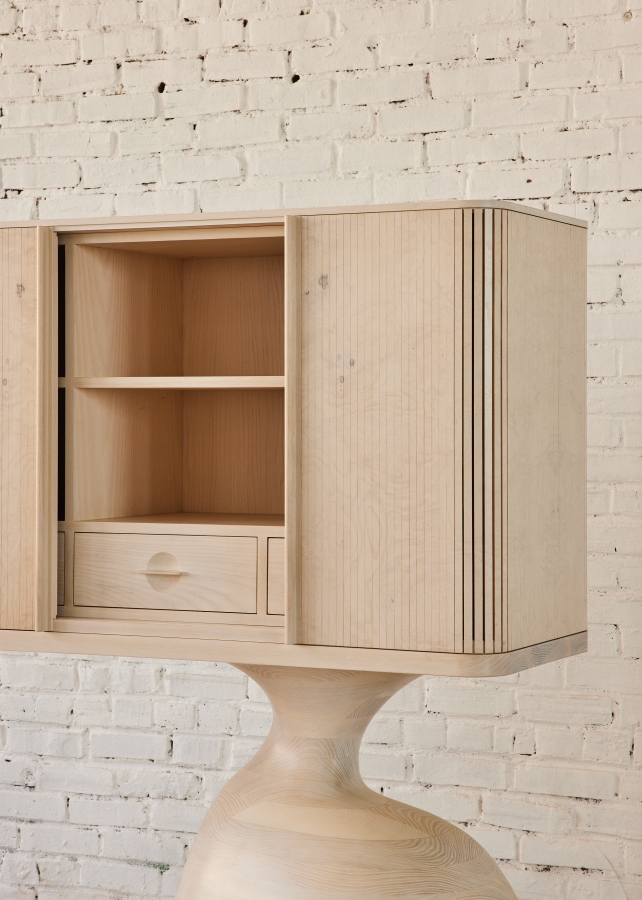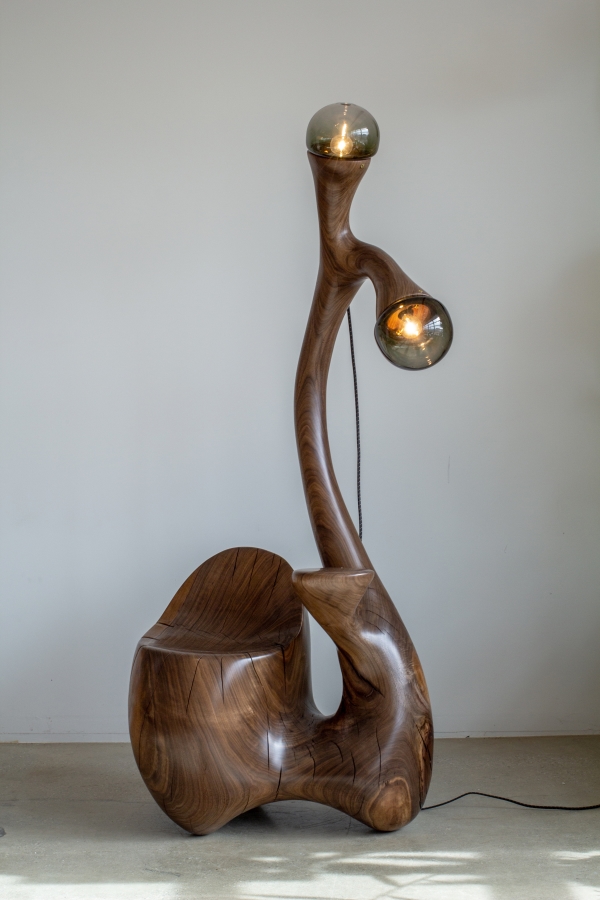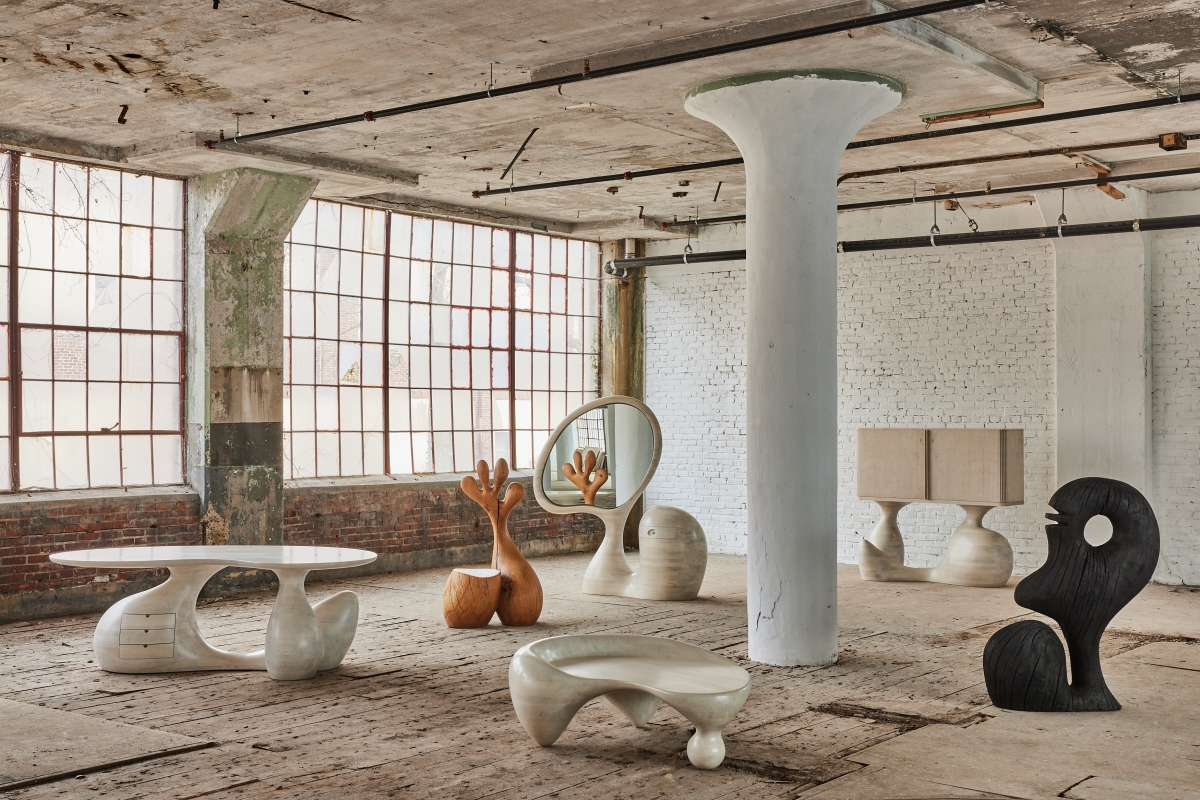
Artist’s Biography
Aaron Poritz is an American designer and artist born in Massachusetts, in 1984. He graduated with a Bachelor of Architecture from the California College of the Arts in 2008. For two years he worked with Morris Adjmi Architects in New York City, gaining professional experience.
In 2011 he worked in Ecuador on a sustainable energy station concept for Equitable Origin, a nonprofit organization dedicated to promoting socially and environmentally responsible energy development. While living in Ecuador, he also helped to facilitate community-based design projects with the Secoya tribe, an indigenous community located in the northeast portion of the Amazon Basin.
While visiting a friend in Nicaragua in 2012, he encountered a former Peace Corps volunteer who was operating a lumber export business directed at processing old growth trees that fell in hurricane Felix in 2007. He recognized an opportunity to design his first collection of furniture, which was featured in the New York Times in July 2013. Thereafter, his studio developed organically.
Aaron established his studio at the Brooklyn Navy Yard in 2014, concentrating on high-end residential furniture and sculpture. His projects are multidisciplinary in that they encompass both design and fabrication under one roof. He grew up working in a wood shop and sculpture studio and has always had a passion for understanding the formation of objects and buildings. This is reflected in the elegant tactile details one discovers in his furniture or by strolling through a space he has designed.
He uses exquisite materials blended with flawless fabrication. His work highlights the natural patterns and texture found in wood, stone and ceramics. The furniture has a timeless quality; though contemporary, it evokes nostalgia. His sculpture is unique, playful and mysterious, inspired by ancient functional forms.
Bio source: https://aaronporitz.com/aboutaaron
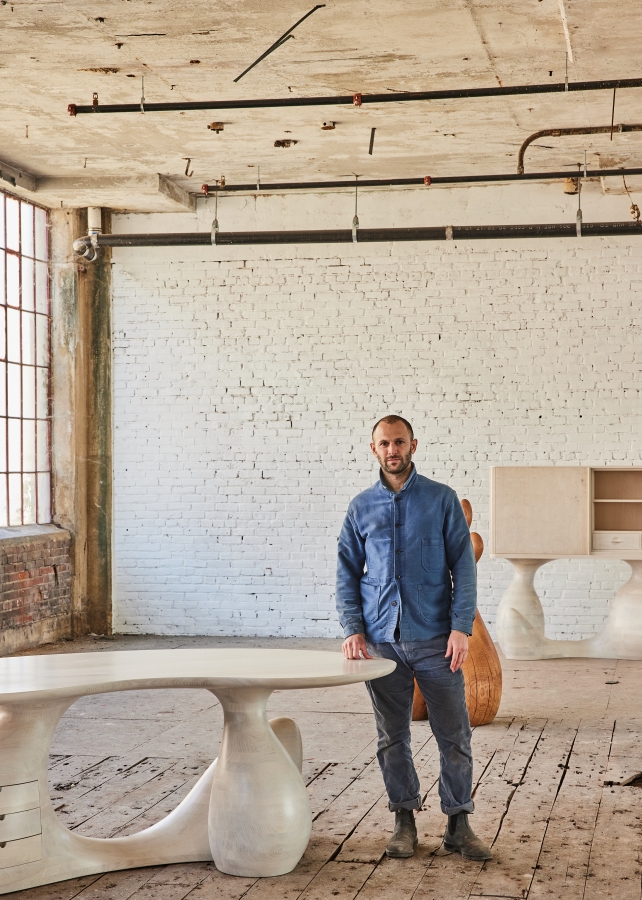
Interview
Artist: Aaron Poritz
By Carol Real
Your pursuit of sculpture began with ceramics. Can you tell us about this beginning?
My dad taught sculpture (including welding and ceramics) and art at the University of Massachusetts so I was around clay and metal objects from a young age. I took my first ceramics class when I was around 13 and it came very naturally to me. I apprenticed with a ceramicist soon after and worked for her throughout high school. That experience taught me that I never wanted to be a production potter. However, I loved working with clay, which was critical for making decisions once I graduated and moved on to college.
What role does experimentation have in your career?
I would say that is one of the foundations of my practice. I am always playing and exploring materials, technology, and form. I seldom stick to a singular style or idea for more than a few years before trying new styles or ways of making. I enjoy the idea that each of my series almost looks like a different designer or artist designed it.

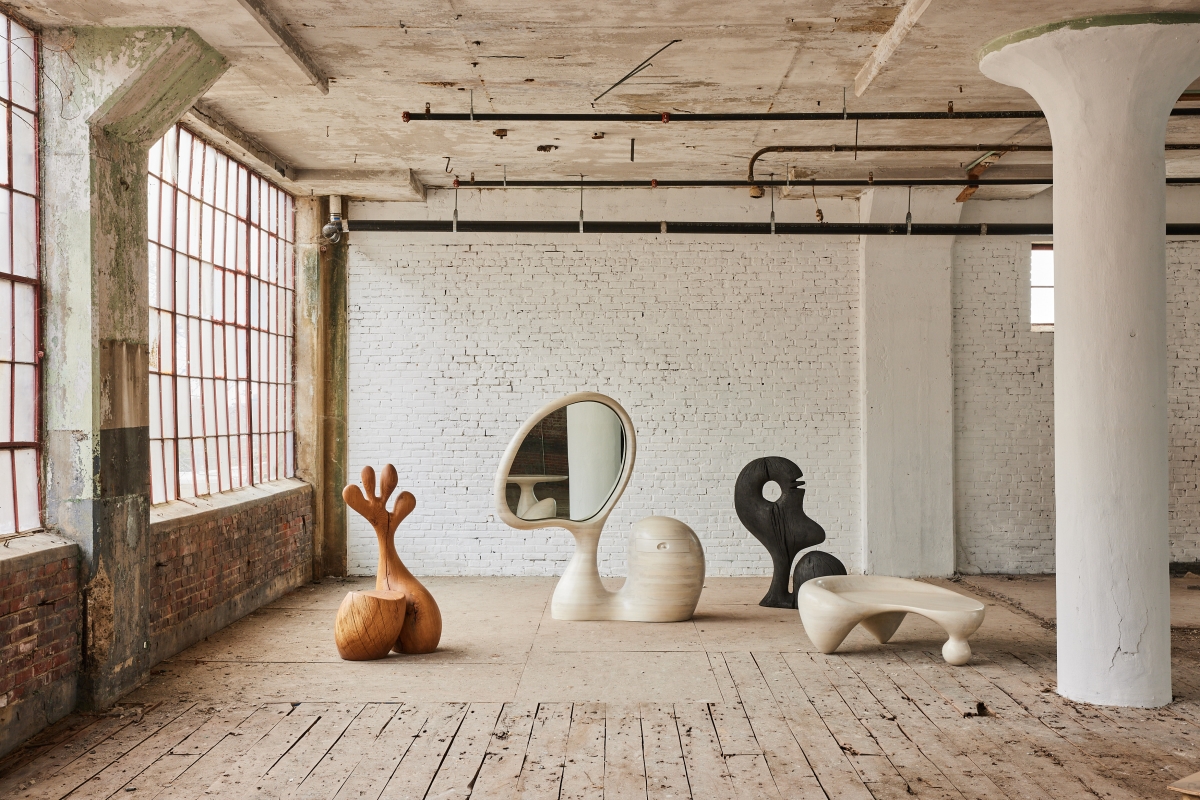
What are you currently fascinated by and how is it feeding into your work?
I have been exploring robotics and how it can help my sculpture workflow. I’ve always been fascinated by sculpture and excited about less traditional furniture. Playing with the idea of combining sculpture and furniture has been my main focus for the past few years.
What’s it like living in Brooklyn these days? Do you miss your hometown?
I have been in Brooklyn for approximately 15 years. Living in New York has always had its ups and downs for me. It provides a healthy active creative environment but I’ve always struggled with the lack of space and access to outdoor activities.
Artists are said to spend a lot of time alone in their studios. Do you prefer silence or background music?
I tend to have a flow throughout the day. I like to start the morning with quiet time and computer emails or desk time. Around lunchtime, I like to do something physical and then work on a sculpture while listening to music.
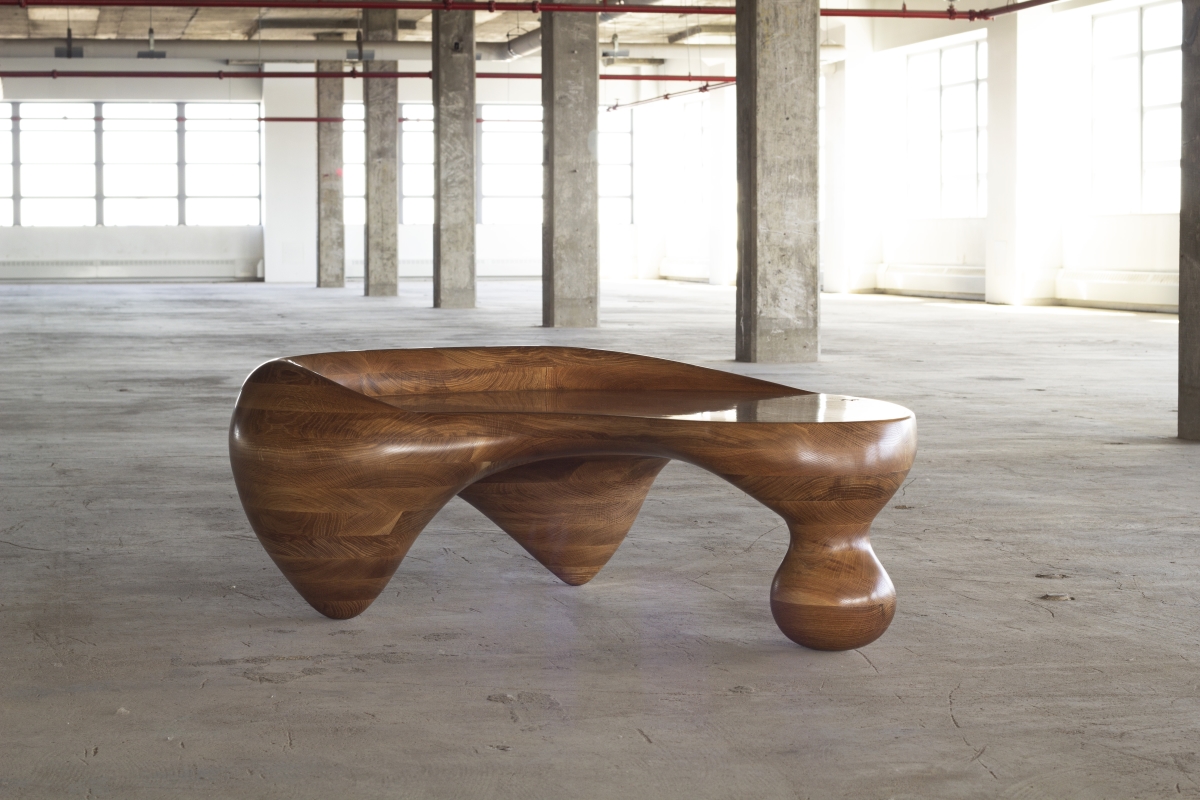
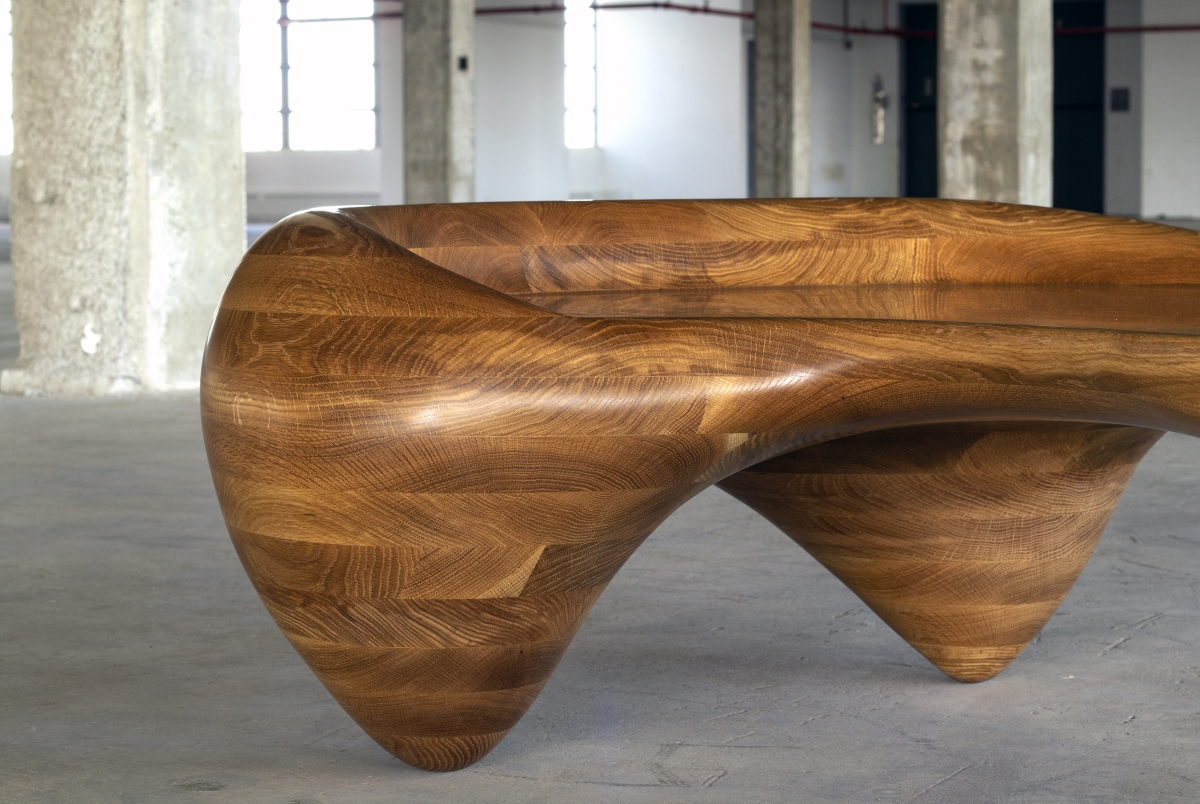
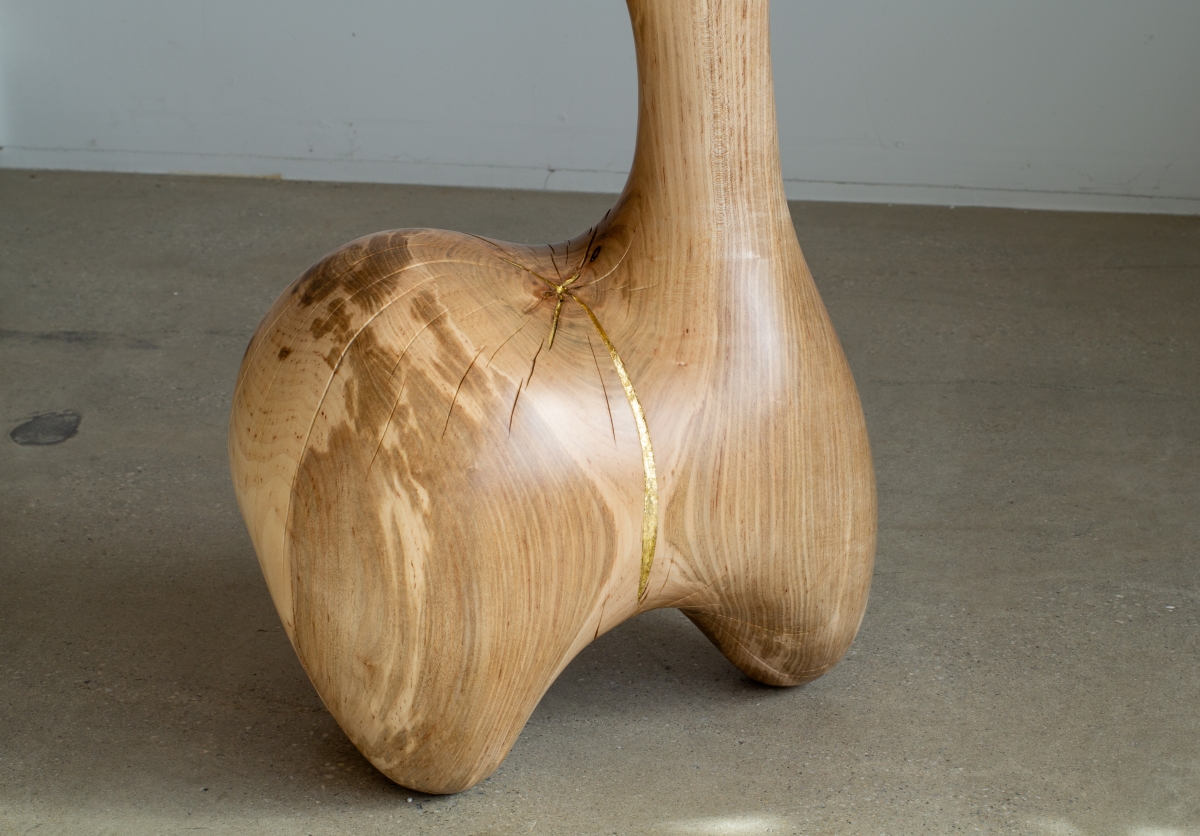
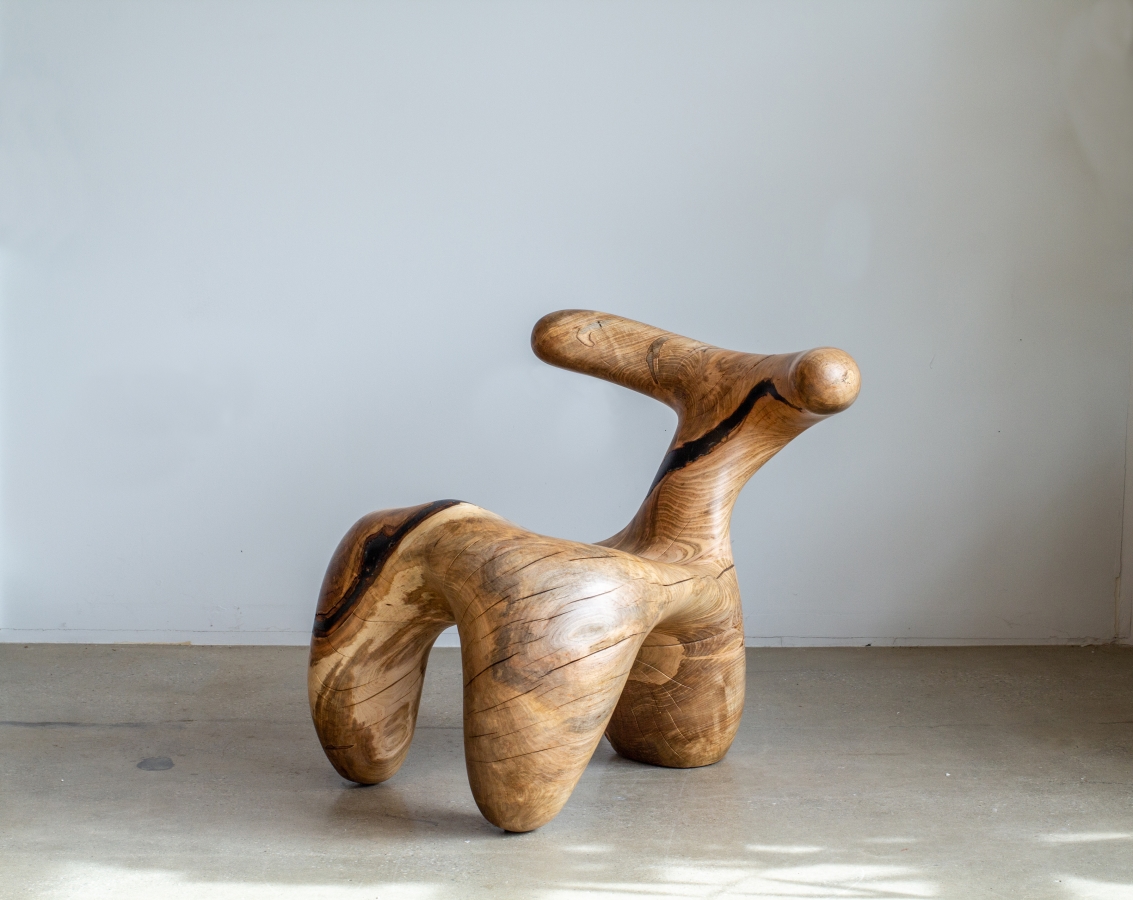
Where do you start when developing new artwork? What are the various stages of that process?
I always start with hand sketches and then move on to clay models. Once the clay model is where I want it, I scan and digitize the object. Once it is a three dimensional digital object, I do some final manipulation before setting up the necessary files to start fabrication.
Your designs are objects of art with utility. With so many woods available on the market, which is the one that supports furniture design more in terms of versatility and durability? What advantages and disadvantages does it have compared to other materials?
I love the way walnut looks but I also like working with ash, maple, elm, oak, and many others. All trees have their own distinct character and each has a slightly different workability, which is fun to learn about. I don’t really have a specific tree I like most. It’s more about what the piece will be about and what mood or feeling I want to convey in the work that drives the tree selection.
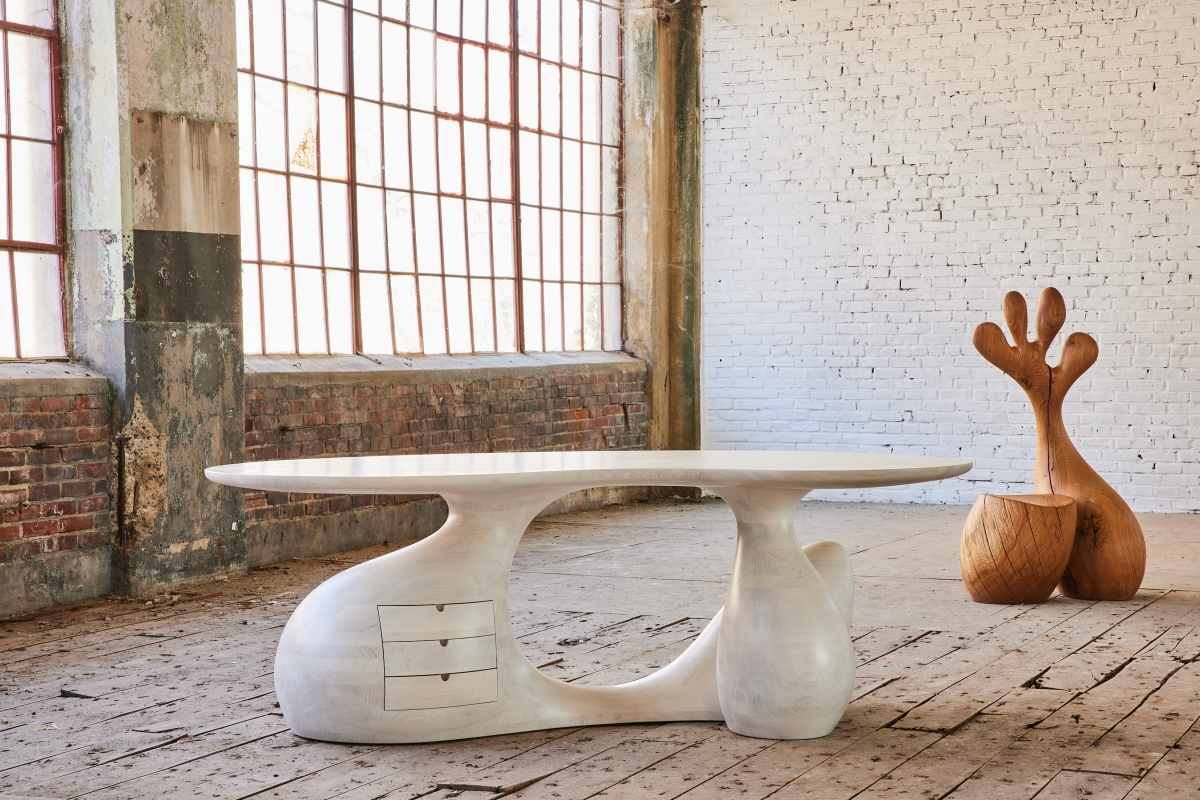
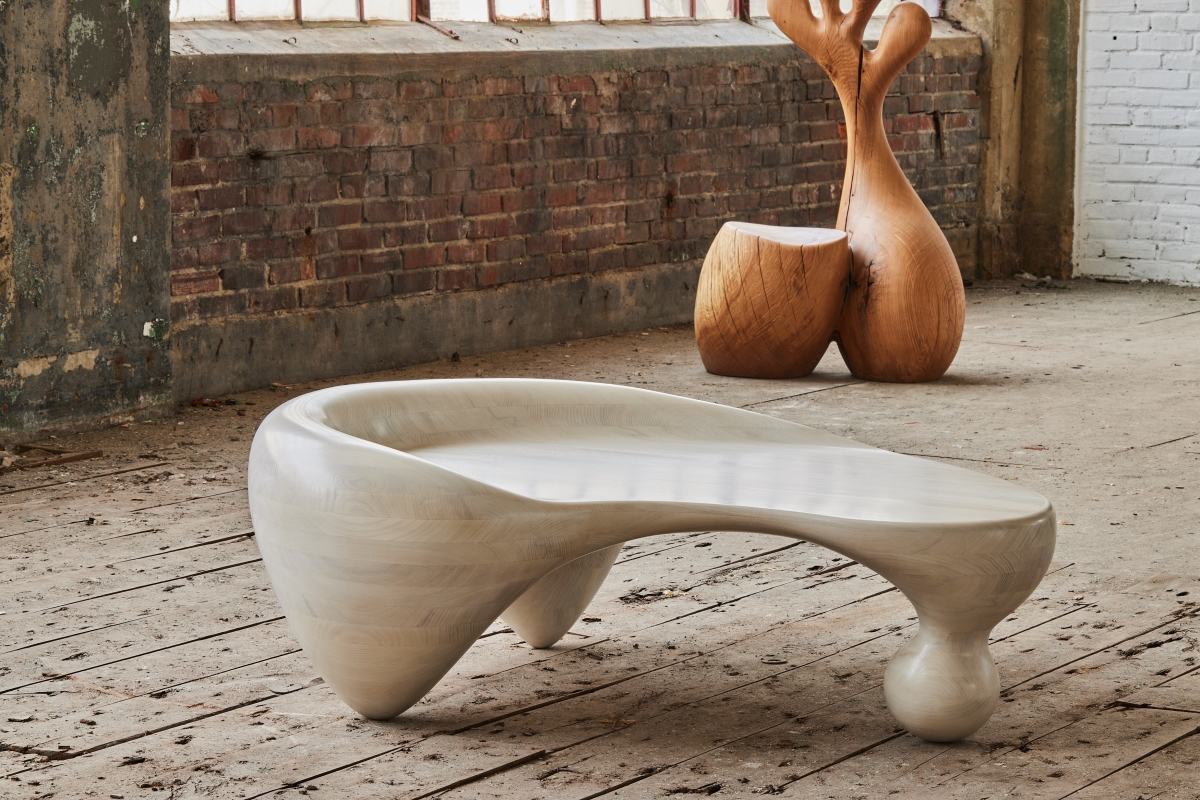
Your academic background is architecture. How do you create that tension between technical precision and the organic nature of materials?
The final outcome of the pieces often has an organic form, as does the initial material itself. However, the fabrication technology and the way I get to that final form is very precise and extremely technical. I think my background in a more technical field comes through in the process more than in the final form of my current work.
When you work for large companies, such as hotels or stores, do you try to interpret their needs or, do they adapt to your artistic ideas?
It’s always a combination of the two. I think many jobs come our way because of the work we do. However, you always have to be aware of and collaborate with the client to create something they are happy with and want. I like it when I have some constraints and need to meet the needs of a client. I think some of my best ideas and work come when I am forced to work within project guidelines and constraints.
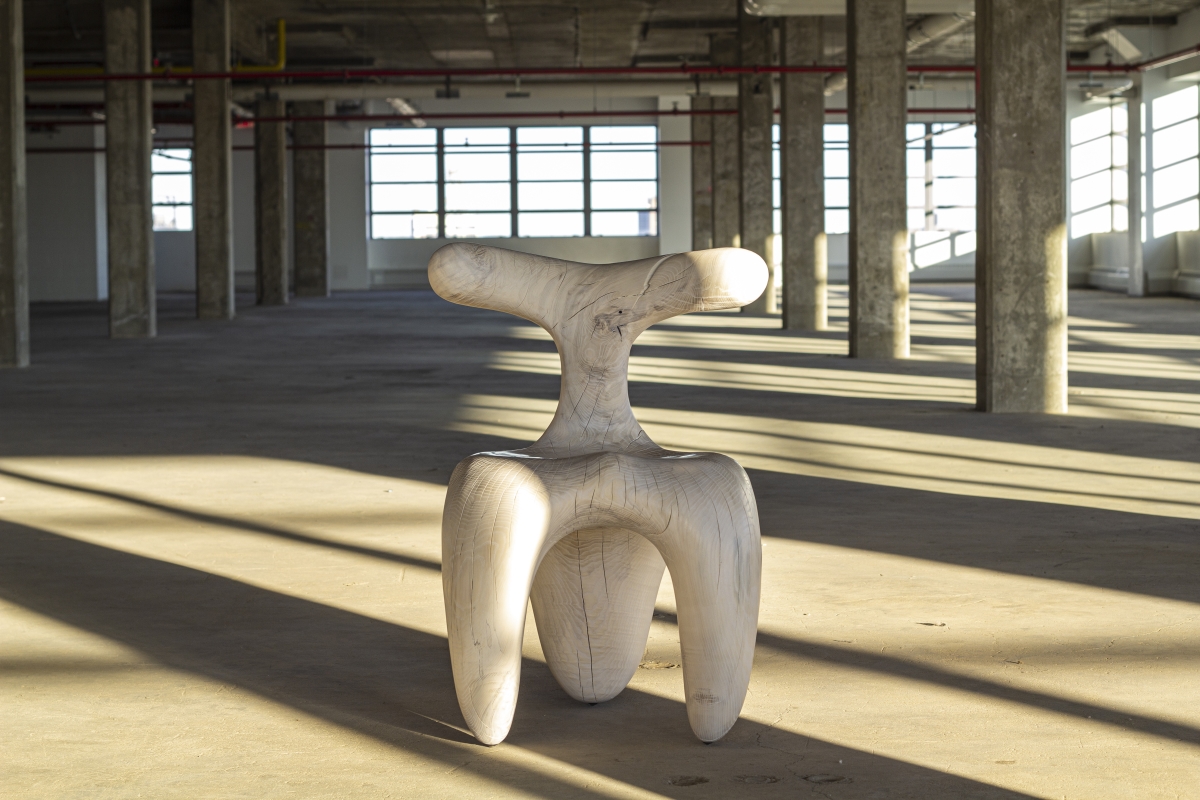
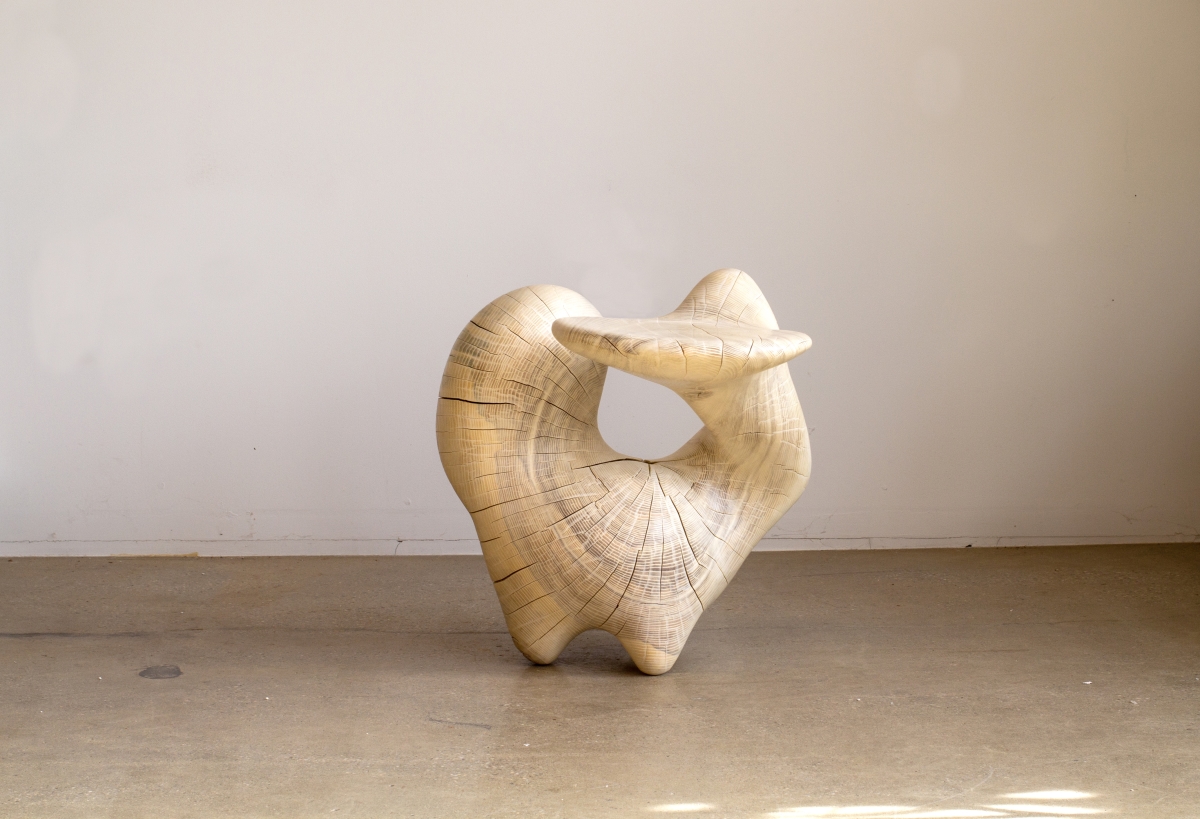
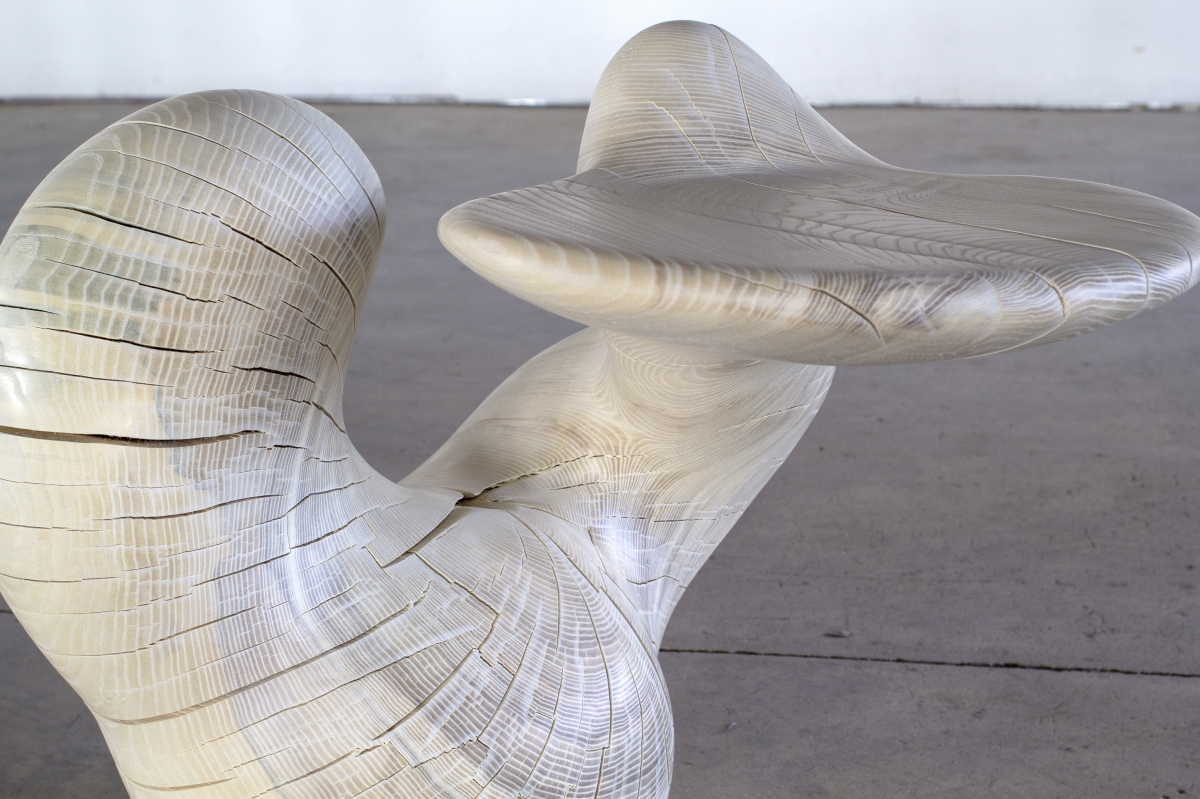
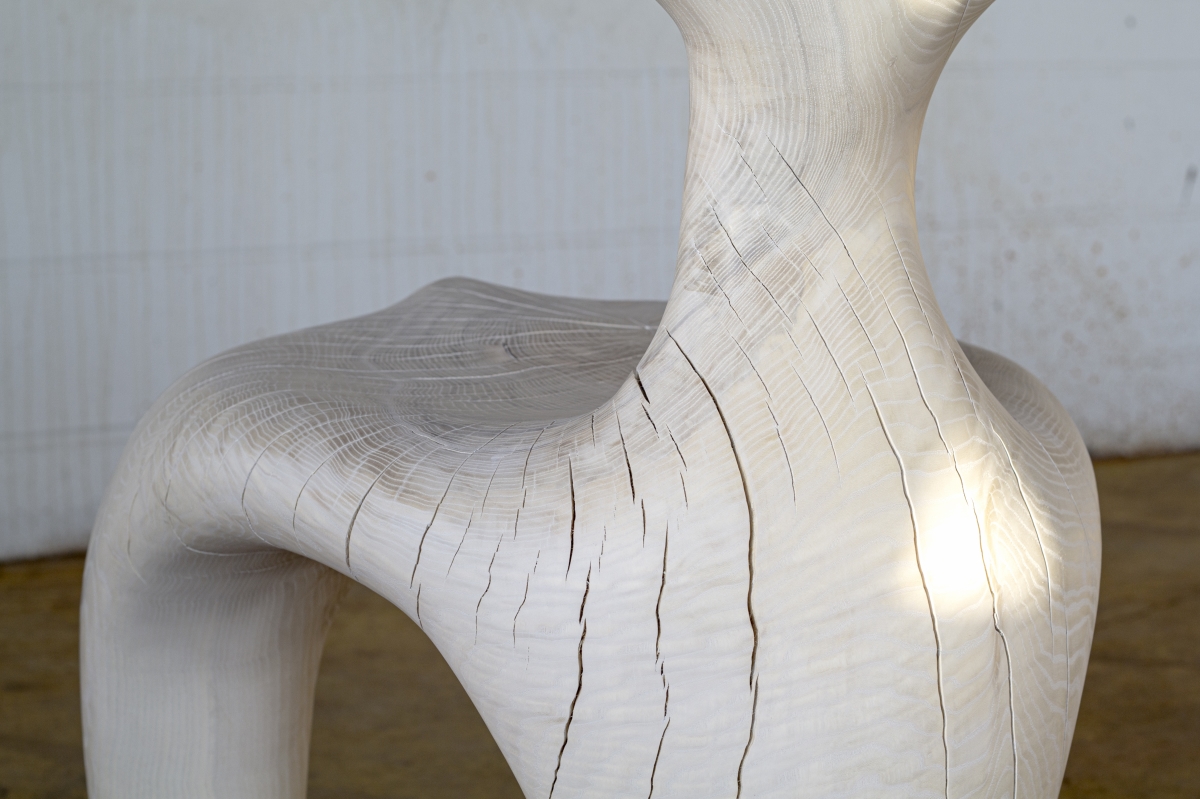
Is there a project you are working on right now that you would like to share with our readers?
I am most excited about expanding my personal collection, which focuses on multifunctional floor lamps and side tables. I’m also super excited about some large outdoor pieces that are in the works.
Favorite phrase?
That’s a difficult question. I can’t say I have a phrase that is my favorite.
Editor: Kristen Evangelista
